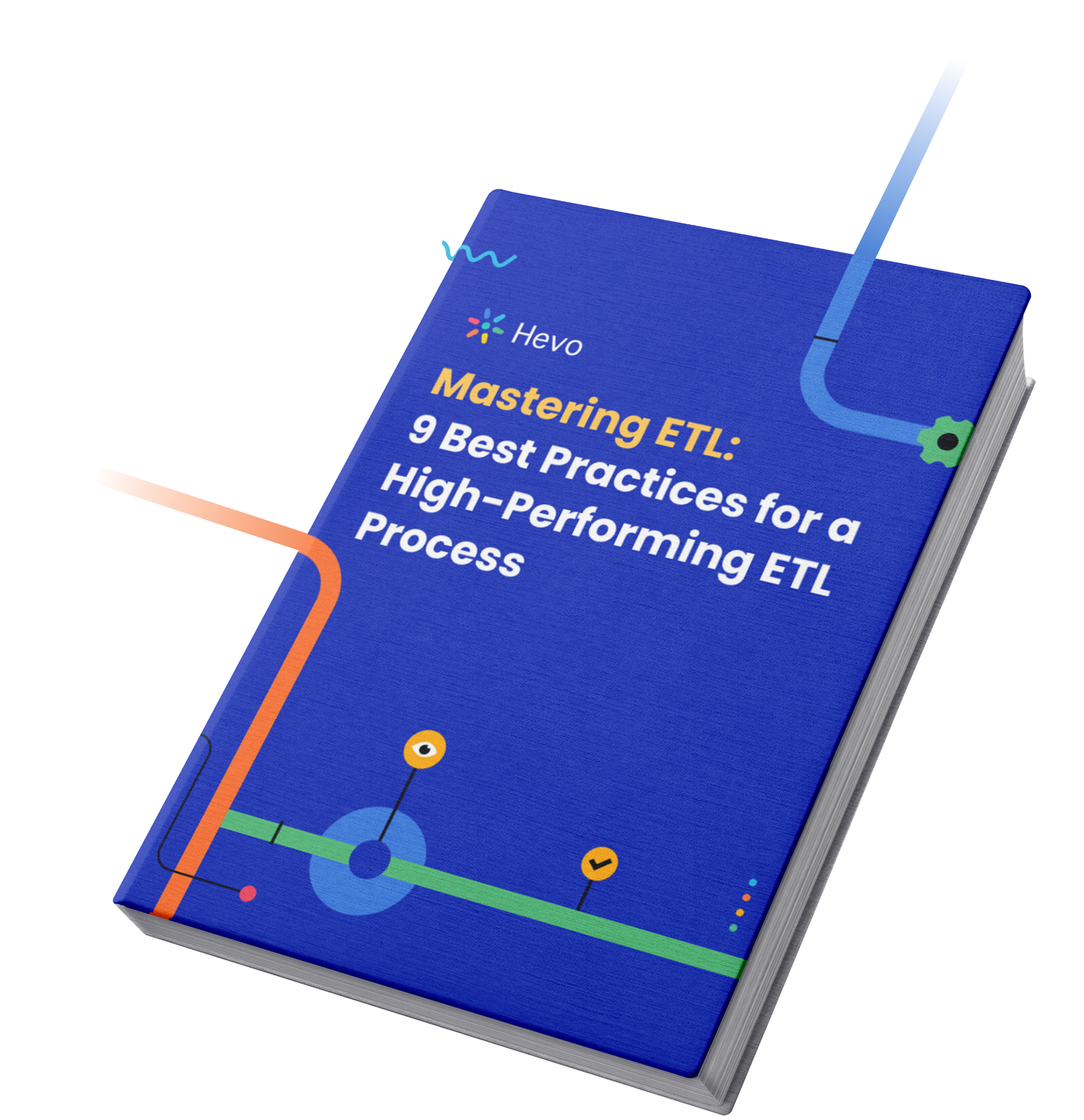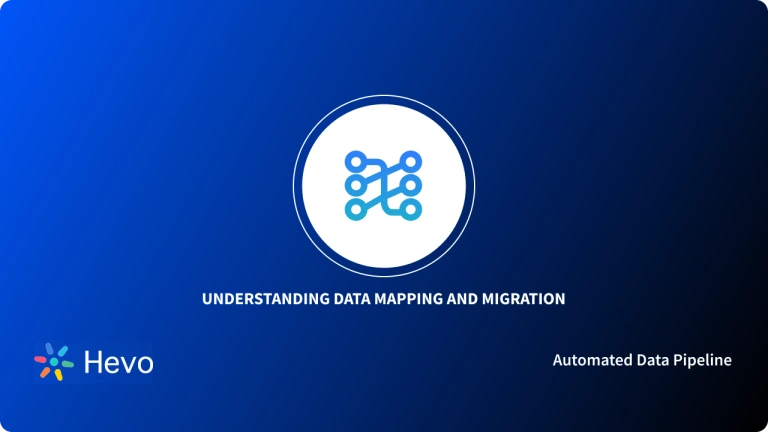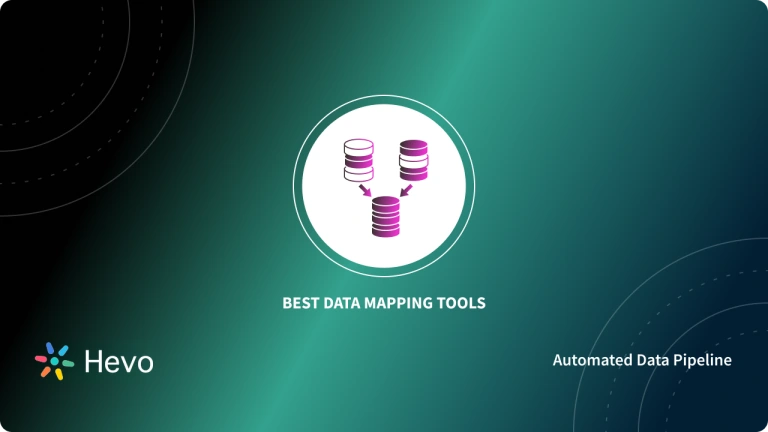 Key Takeaways
Key TakeawaysSource-to-target mapping defines how each field in your source systems maps to fields in the target (e.g., data warehouse) and sets rules for transformations, naming conventions, and data flows.
The mapping process involves defining attributes, establishing mappings, applying transformations, enforcing naming standards, building data flows, setting transformation guidelines, testing, deploying, and maintaining the mapping.
You can map manually (flexible but time-consuming), use automated tools (fast, scalable, no-code), or choose a hybrid approach (semi-automated with human oversight).
Do you wish to understand Source to Target Mapping? Are you confused about whether manual or automated Source to Target mapping would be better for your data transfer requirements? If yes, then you’ve come to the right place. This article will provide you with an in-depth understanding of how Source to Target Mapping works and how you can make the right choice on how your data should be mapped to your target system.
Table of Contents
What is Source to Target Mapping in Data Warehouses?
When moving data from one system to another, it’s almost impossible to have a situation where the source and the target system have the same schema. Hence, there is a need for a mechanism that allows users to map their attributes in the source system to attributes in the target system. However, this process becomes more complicated than it already is when there is data that has to be moved to a central data warehouse from various data sources, each having different schemas.
Source to Target mapping can be defined as a set of instructions that define how the structure and content in a source system would be transferred and stored in the target system.
It can be seen as guidelines for the ETL (Extract, Transform, Load) process that describes how two similar datasets intersect and how new, duplicate, and conflicting data is processed. It also sets various instructions on dealing with multiple data types, unknown members and default values, foreign key relationships, metadata, etc.
To understand how Source to Target Mapping example works, an example is shown below considering a small database of various movies and actors.
The above image shows three tables, two of which are a list of movies and actors and a third table defining a relationship between those two tables. The “movieid” and “actorid” attributes in the “casting” table are foreign keys to the “id” attribute in the “movie” table and the “id” attribute in the actor table, respectively. It can be observed that these tables are in the normalized form.
Ditch the manual process of writing long commands to connect your PostgreSQL and choose Hevo’s no-code platform to streamline your data migration.
With Hevo:
- Easily migrate different data types like CSV, JSON etc.
- 150+ connectors, including 60+ free sources).
- Eliminate the need for manual schema mapping with the auto-mapping feature.
Experience Hevo and see why 2000+ data professionals, including customers, such as Thoughtspot, Postman, and many more, have rated us 4.3/5 on G2.
Get Started with Hevo for FreeIf this data has to be moved to a data warehouse, various complex operations will have to be performed. This database will have to be denormalized so that no complex join operations have to be performed on the large datasets at the time of analysis.
The above image shows how the data would be ideally stored in the data warehouse. This would require each attribute in the source to be mapped to each attribute in the target structure before the data transfer process begins. This was a fundamental example, and real-world situations can become much more complicated than this based on the following factors:
- Size of the datasets.
- The number of data sources.
- The number of relationships between data sources.
Examples of Source to Target Mapping
Source-to-target mapping (STM) in a data warehouse is the process of converting data from source systems into the format that the target warehouse requires for analysis. Here are some examples across industries:
Retail Industry
- Source: Point of Sale (POS) Systems
- Target: Data Warehouse for Sales Analytics
- Source Field:
POS_TransactionID - Target Field:
Transaction_IDrenamed for consistency - Transformation: Combine
Store_IDandTransaction_IDto make it unique. - Purpose: Analyze daily sales trends across several stores.
Healthcare
- Source: Electronic Health Records (EHR) Systems
- Target: Patient Insights Data Warehouse
- Source Field:
Patient_Name, DOB, Gender - Target Field:
Patient_ID,Full_Name, Age, Gender - Transformation: Combine first and last names to form
Full_Nameand calculate Age from DOB. - Reason: Monitor patient visits, demographics, and treatment trends.
Finance
- Source: Banking Transaction Systems
- Target: Risk Management Data Warehouse
- Source Field:
TransactionDate, Amount - Target Field:
Transaction_Date, Transaction_Amount_USD - Transformation: Foreign currency amounts are converted into USD using the exchange rate at the date of transaction.
- Reason: Monitor fraud risk and regulatory compliance.
Understanding the Need to Set Up Source to Target Mapping
Source to Target mapping is an integral part of the data management process. Before any analysis can be performed on the data, it must be homogenized and mapped correctly. Unmapped or poorly mapped data might lead to incorrect or partial insights.
Source to Target Mapping assists in three processes of the ETL pipeline:
1. Data Integration
Data integration can be defined as the process of regularly moving data from one system to another. In most cases, this movement of data is from the operational database to the data warehouse.
The mapping defines how data sources are to be connected with the data warehouse during data integration. It sets various instructions on how multiple data sources intersect with each other based on some common information, which data record is preferred if duplicate data is found, etc.
2. Data Migration
Data migration can be defined as the movement of data from one system to another performed as a one-time process. In most cases, it is done to ensure that multiple systems have a copy of the same data. Although it increases the storage requirements for the same data, it makes it more available and reduces the load on a single system. The first step of data migration is data mapping, in which attributes in the data source are mapped to attributes in the destination.
3. Data Transformation
Data transformation can be defined as the conversion of data at the source system to a format required by the destination system. This includes various operations such as data type transformation, handling missing data, data aggregation, etc. The first step in data transformation is also mapping which defines how to map, modify, join, filter, or aggregate data as required by the destination system.
Any digital transformation is likely to fall short unless it is based on a solid foundation of Data Integrity and Transformation. To take advantage of data opportunities and overcome Data Integrity challenges, companies often adopt a Data Integration/Transformation Platform to transform data before loading it to its destination. One such No-Code, Automated platform is Hevo Data.
Hevo Data offers a No-code Data Pipeline that automates the entire process of ingesting data from 150+ sources to a destination of your choice in real-time. It comes with a simple but powerful UI to modify and enrich the data you want to transfer. And you needn’t worry about schema management, they’ve got it all covered in the automation.
Steps Involved in Source to Target Mapping
You can map your data from a source of your choice to your desired destination by implementing the following steps:
Step 1: Defining the Attributes
Before data transfer between the source and the destination begins, the data to be transferred has to be defined. This means defining which tables and which attributes in those tables are to be transferred. If data integration is being performed, the frequency of integration is also defined in this step.
Step 2: Mapping the Attributes
Once the data to be transferred has been defined, it has to be mapped according to the destination system’s attributes. If the data is being integrated into a data warehouse, some amount of denormalization would be required, and hence, the mapping would be complex and error-prone.
Step 3: Transforming the Data
This step involves converting the data into a form suitable to be stored in the destination system and homogenized to maintain uniformity.
Step 4: Give Standard Naming Conventions Specifics
Following the selection of the data fields to be mapped, each field’s data format must be determined and documented in a data mapping document. Next, ascertain the intended format. For example, you must state in the source to target mapping document that the target database requires DD/MM/YY, even though the source uses MM/DD/YYYY. This will ensure that the requirements for the end format are obvious. When mapping data from many sources, consistency in name and data type formats is crucial.
Step 5: Establish Flows for Data Mapping
Data mapping comes next once naming standards are established. In order to align source and destination fields, data flows must be recognized, mapped, and matched. To avoid bottlenecks and problems in a manual process, records must be kept up to date and the process must be watched over. Given the complexity and potential for inaccuracy, data denormalization may be necessary when mapping for integration into a data warehouse. Here, automated data mapping tools might be useful.


Step 6: Establish Data Transformation Guidelines
This stage looks at how data is converted from the source format to a consistent format that is compatible with the target system. Data transformation becomes crucial when non-standardized and different data formats are likely to exist. Establishing transformation rules or logic to direct the procedure is essential.
Step 7: Testing the Mapping Process
Once the first three steps have been completed, it has to be tested on some sample data sources to ensure that the right data attributes in the proper form are mapped correctly with the destination system.
Step 8: Deploying the Mapping Process
Upon completion of testing and successful data transfer, migration or integration can be scheduled on the live data as per the user’s requirements.
Step 9: Maintaining the Mapping Process
This step is only required for data integration since migration is a one-time process. Data integration will take place regularly after certain intervals of time. Hence, the Source to Target Mapping process must be maintained and updated periodically to handle large datasets and any new data sources if required.
Source to Target Mapping Techniques
The two primary techniques for mapping are as follows:
- Manual Source to Target Mapping
- Automated Source to Target Mapping
- Semi-automated Source to Target Mapping
1. Manual Source to Target Mapping
This method requires developers to manually code the connection between the source and the destination system. This process can only be used in case the mapping is to be performed for only a few sources that don’t have much data.
Advantages:
- Flexible.
- Completely customizable to the exact needs of the user.
Disadvantages:
- Manual.
- Time-consuming.
- Resource-intensive.
- Code-dependent.
- Error-prone.
2. Automated Source to Target Mapping
If the data is being integrated into a data warehouse, the number of sources and the volume of data will increase with each round of data transfer. A manual mapping mechanism would be too complex and expensive to manage in this scenario, and an automated mapping system would be required. This system should be able to scale up or down as per the requirements of the data to be transferred.
Advantages:
- No technical knowledge is required.
- Fast.
- Easy to scale.
- Easy to schedule.
- Deployment flexibility.
- Eliminates human error.
- Accurate data integration.
- Business-friendly.
- Timeliness.
Disadvantages:
- Training required for use.
- In-house solutions are expensive to build.
3. Semi-automated Source to Target Mapping
Schema mapping, another name for semi-automated data mapping, is a hybrid method that blends automated and human data mapping. Developers use software that links different sources and their goals in this process. Developers then personally verify the system and make any necessary modifications. This is useful for simple data integrations, migrations, and transformations involving tiny volumes of data.
Advantages:
- Efficiency Improvement
- Reduced Human Error
- Scalability
Disadvantages:
- Complexity of Mapping
- Adaptability to Changes
- Limited Context Understanding
Conclusion
This article provides an in-depth understanding of how Source to Target Mapping works, why it’s necessary, what steps are involved in it, and the various methods of mapping, allowing users to decide how they want to perform mapping for their systems.
Discover the benefits of a custom schema mapper for customizing your data schema and optimizing data integration.
The user can either choose to manually map the data using traditional techniques or can rely on an automated tool. Hevo Data is one such tool that provides you with a simple solution for your Source to Target Data Mapping. With the platform’s automated data mapping feature, users can quickly and easily map source data to target data structures, saving time and minimizing manual effort.
Give Hevo a try by signing up for the 14-day free trial today. Also, check out our unbeatable pricing to choose the best plan for your organization.
FAQ
What Is Source Target Mapping?
Source target mapping is the process of defining how data fields from a source system correspond to fields in a target system. This is commonly used in data migration and integration projects to ensure the accurate transfer of information between systems.
What Is Target Mapping in SAP Fiori?
In SAP Fiori, target mapping defines the configuration that connects a UI element (like a tile or link) to a specific application or intent. It includes settings like the semantic object, action, parameters, and navigation type to ensure seamless app launches.
What Is an Example of Market Mapping?
Market mapping involves analyzing the competitive landscape by identifying players, products, and positioning in a market. For example, a company might map competitors in the SaaS space by segmenting them based on pricing, features, and customer base.











